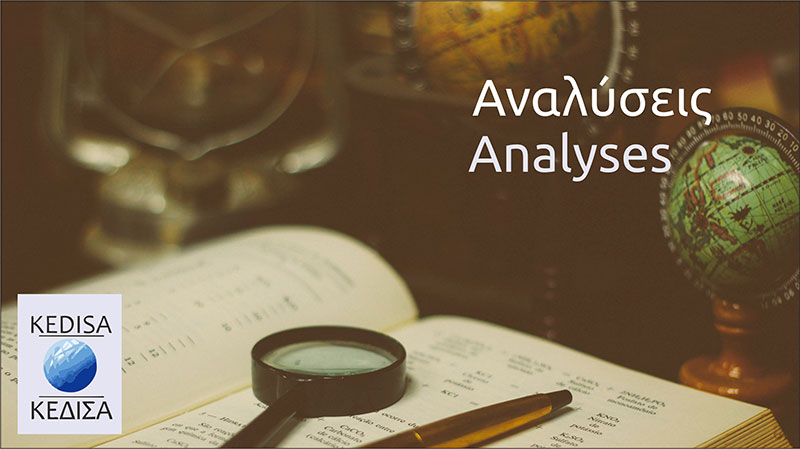By Francesco Mereu, Analyst KEDISA
The relatively recent arrest of Italian journalist Cecilia Sala at the hands of the Iranian Government shocked international public opinion, shedding light on the dire situation of human rights abuses in Iran. The absence of formal charges brought against her, coupled with the heinous conditions of her incarceration at the infamous Evin prison, revealed the endurance of repressive methods in the country despite the rise of a “moderate” faction to power. As the affair unfolded in the past weeks and Sala was, fortunately, released, many were startled to learn that behind her arrest – or, rather, her kidnapping – lay the intent of politically blackmailing the Italian government. Cecilia Sala was, in fact, traded in exchange for an Iranian prisoner held at Milan Opera’s prison, Mohammed Abedini, who was under custody at the request of the American government for allegedly engaging in terrorist activities[1]. While this story luckily ended with the safe return of one of Italy’s finest journalists, it is important to note that many of those detained at Evin suffered a different, more dramatic fate. This episode sparks an important reflection on the magnitude of political repression within the Islamic Republic of Iran and its centrality in regime maintenance. In this article, I will succinctly trace the history of Evin prison from its creation to the present day, underscoring the shifts and changes in incarceration practices and what these reveal about the way in which Iranian leaders conceive punishment. This aspect, in turn, is crucial to examine, providing insights into the inner dynamics of the regime, its fragility domestically, and its isolation internationally.
Behind the walls
Evin’s prison, built in 1972 by Shah Pahlavi and operated by its secret police, the SAVAK, has been a notorious punishment for political dissidents since its inception. After the 1979 Revolution, the new regime used the detention center to incarcerate members of Tudeh, the communist party of Iran, as well as other prominent opposition figures. At this initial stage, particularly in the years of the Iran-Iraq war, Grand Ayatollah Khomeini was determined to consolidate the regime’s power through a mixture of ideological indoctrination and political purges. Against this backdrop, the extrapolation of confessions through torture became a key strategy to crush any form of dissent. These forced confessions, called “recantations”, would be televised and become an object of spectacle that tapped into Khomeini’s narrative about the need to eliminate those who threatened the revolution – the internal enemies of the country. This strategy, which I will touch upon again, paved the way for the institutionalization of corporal “punishments” in Iran’s criminal justice system, contributing to render Evin a place of great symbolic significance. Journalists, activists, directors, lawyers and academics, Iranians and foreigners alike, ended up serving time in the prison and were subjected to brutal forms of torture, ranging from prolonged isolation to beatings and rape. However, unlike in other authoritarian countries such as Russia, there has been relatively less secrecy around what happens behind the detention center’s walls. I contend that this is the case because Evin’s main function, precisely due to its notoriety, is not to surveil its inmates, but rather society at large.
Criminal justice in Iran
We can draw invaluable insights to understand the function of the criminal justice system in Iran from the oeuvre of Michel Foucault. The French philosopher wrote extensively about the political function of punishment in societies in his seminal work, Discipline and Punish, tracing a history of the evolution of penal systems. Foucault asserts that, before the Enlightenment, punishment had a distinctive corporeal dimension that was – and needed to be – spectacularized. It was “an exercise of terror”[2] that served the logic of a monarchical system in which the king had to constantly re-affirm his god-mandated sovereignty. Through the witnessing of confession, torture, and execution of convicts, people felt “the unrestrained presence of the sovereign”[3] and recognised the monarch’s ability to find the truth behind persecuted crimes. In a way, Focault argues, these penal practices were instruments at the hands of monarchs to perpetuate their power by demonstrating their ability to wage war against their internal enemies. This mode of disciplining society reached its pinnacle during the Inquisition era, with the popularisation of coercive investigative practices, secret trials, and public display of torture for those deemed guilty. The development of liberalism and constitutionalism radically changed rulers’ approach to those who disobeyed the law, substituting the need for physical punishment with that of restricting the freedom of criminals, in large part to prevent the emergence of public uprisings.
The Inquisition era seems to be a source of inspiration for Iran’s government. The accounts of Evin’s survivors and the leaked videos of the prison’s surveillance system lay bare the methods, practices that derive from a “corporal” conception of punishment. According to reports by Human Rights Watch[4] and Amnesty International[5], inmates in certain sections, such as Section 305, endure harsh interrogations and are confined to empty rooms under intense artificial lighting, deprived of even basic necessities. The guards’ intent, as numerous survivors claimed, is to break inmates and extrapolate from them a forced confession that is taped and used against them in Courts. As historian Ervand Abrahamian notes[6], this Kafkaesque reality characterizes the daily lived experience of political prisoners, but does not necessarily denote a country’s return to “the dark ages”. Rather, according to Abrahamian, this inquisitive culture suggests a calculated political will to accrue a collective sense of paranoia, galvanising those who fear the enemy of the Republic while terrorizing dissidents.
However, this argument does not suffice to explain the culture of brutalisation that pervades the country. Foucault’s conceptual framework can be illuminating in this regard. We can see, both in pre-revolutionary and contemporary Iran, the rulers’ attempt to amplify people’s perception of their omnipotence through the display of violence. This is a necessity, acting as a proof of the rulers’ divine authority – a principle inscribed in the country’s constitution through the articulation of Velayat-e Faqih. This concept grants the Supreme Leader of the Revolution the status of highest authority in terms of political and religious matters. Much like medieval monarchs, Ali Khamenei now and Khomeini before him legitimised themselves by claiming to act in the name of God, or better, by claiming that God acted through them. Thus, the practice of punishment is not merely a way to terrorise society and curb dissent, it becomes what Foucault calls a “political ritual” that re-affirms the divine nature of political power upon which the architecture of the modern Iranian state is founded. In this context, the prison of Evin acquires a symbolic force as the site where the State’s omnipotence manistests itself.
Conclusion
A careful monitoring of contemporary events in Iran, particularly following the protests sparked by Mahsa Amini’s death, supports my argument: the state has weaponized its criminal justice system against its own citizens. Moreover, the story of Cecilia Sala reveals that prisons are also being used as a tool of foreign policy to blackmail other countries. While this might seem to signal Iran’s total control, it actually reveals a much deeper fragility. The state’s frequent use of violence, both internally and externally, exposes its internal weakness, as it struggles to provide a unifying ideology and build genuine consent. Similarly, Iran’s rogue actions on the international stage further isolate the country, solidifying its status as a global pariah. A closer look at the Islamic Republic reveals a regime whose hegemony, borrowing from Gramsci, is weakening, with the governing coalition perpetually at war with its own people. This unsustainable approach was evident in the profound crisis of 2022, where women from diverse social and ethnic backgrounds played a pivotal role in challenging the regime. The winds of revolution are now clearly blowing against the regime. One day, the chants of uprisers, driven by courage and resilience, will shatter the regime’s suffocating grip, ushering a new era in Iran.
Sources
Abrahamian, E. (1999). Tortured confessions : prisons and public recantations in modern Iran. University of California Press.
Amnesty International. (2025). The state of the world’s human rights: Annual report 2024/2025. https://www.amnesty.org
Braithwaite, S., Edwards, C., & Pourahmadi, A. (2025, January 12). Italy releases Iranian businessman wanted by US over drone attack that killed Americans. CNN. https://edition.cnn.com
Foucault, M. (1995). Discipline and punish: The birth of the prison (A. Sheridan, Trans.). Vintage Books.
Human Rights Watch. (n.d.). Iran: The legacy of torture. https://www.hrw.org/legacy/campaigns/torture/iran/
Endnotes
[1] Braithwaite, S., Edwards, C., & Pourahmadi, A. (2025, January 12). Italy releases Iranian businessman wanted by US over drone attack that killed Americans. CNN. https://edition.cnn.com
[2] Foucault, M. (1995). Discipline and punish: The birth of the prison (A. Sheridan, Trans.). Vintage Books.
[3] Ibidem.
[4] Human Rights Watch. (n.d.). Iran: The legacy of torture. https://www.hrw.org/legacy/campaigns/torture/iran/
[5] Amnesty International. (2025). The state of the world’s human rights: Annual report 2024/2025. https://www.amnesty.org
[6] Abrahamian, E. (1999). Tortured confessions : prisons and public recantations in modern Iran. University of California Press.
 English
English

